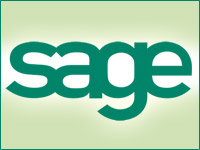
It came as a surprise when Keith Block, vice chairman of Salesforce, made an off-the-cuff remark about a Sage-Salesforce alliance at the Salesforce World Tour event held last week in Boston. Sage and Salesforce in February had announced they would work together, with Sage moving some of its undisclosed ERP applications to the Salesforce Cloud. However, the word didn’t seem to spread, and it remained off my radar for nearly two months.
No matter. Sage has been a mainstay of the SMB market for business apps for a long time. With global reach and customers that push the envelope for what an SMB is, the company enjoyed great success in prior decades. Lately, though, its legacy has been a drag. The apps have needed refreshing for a while, with some of them still operating on flat file system back-ends rather than relational databases.
Time for Change
The major culprits, from my perspective, have been the Sage resellers. The partners have built great businesses on delivering services for customizing and training for Sage products and were reluctant to change their cash cow businesses.
A succession of weak CEOs didn’t help much either. Several thought they could ignore the problem of modernization or cajole partners into adapting, with the backfiring result that the forward thinkers abandoned ship, leaving the more conservative partners with increasing influence.
This is my analysis — and you should look for confirmation. However, my point is that we have arrived at a time when Sage is getting off the dime by getting onto the Salesforce1 Platform and joining the ecosystem. This is great news, but it also has its own issues for competitiveness.
The Right Stuff
Although Salesforce CEO and cofounder Marc Benioff long ago disavowed any interest in building an ERP product, the availability of the platform has been more than enough inducement to get others to do so.
Companies like FinancialForce, Intact, Kenandy and others all have products on the AppExchange that will compete in one way or another with anything that Sage brings to the party. Also, there’s no shortage of non-Salesforce oriented ERP in the cloud happy to do battle, with NetSuite being the 800-pound gorilla.
That said, Sage still has a big user community around the world, with products that reach smaller users than those that other ERP/accounting vendors target, not to mention a partner base that can still deliver. It will be Sage’s relationships, I think, that either make or break this move.
Also, being able to show up with the world’s No. 1 CRM in tow — and a slew of modern business apps to boot — should make a powerful combination. Just ask the other ERP players.
It is still unclear which Sage products will be converted or which ones first. I hope that the company will see this as an opportunity to move everything, so that for the first time, the product lines that grew by acquisition will have a common platform.
A Fresh Start
This is a big test, both for Salesforce and for Sage. For Salesforce, it’s a great way to grow share and gain influence in more parts of the world. For Sage, it represents a chance at redemption and a new start as a more integrated software company with deep expertise in the back office and multiple verticals, such as real estate.
In my mind, this doesn’t leave much room for a Sage CRM product, though. It had three CRM solutions at one point, including ACT! and SalesLogix, which it sold off. Sage is now left with a cloud product that by all accounts is good, but Sage always has been a company by and for accountants, and front-office automation was never something the company put its back into.
I can name other vendors that were in the same situation but which, for multiple reasons, became CRM-oriented enough to talk the talk. So can you.
Sage Summit will take place this summer, and it should offer some very interesting keynotes. Will a Salesforce executive attend to welcome the company to the cloud? To be continued.























































